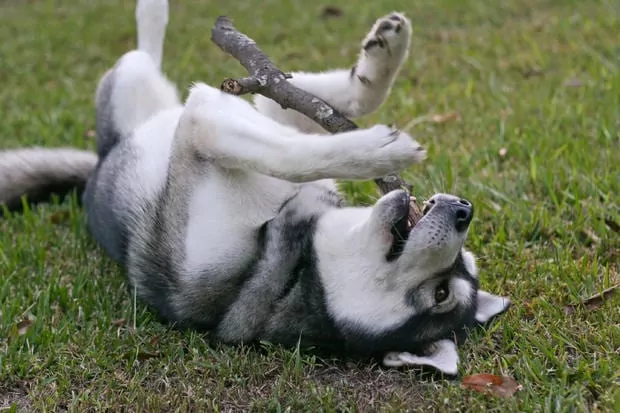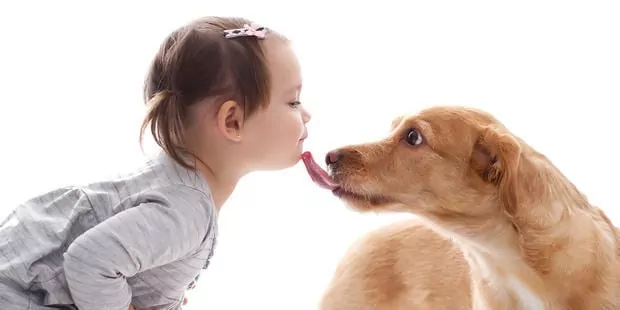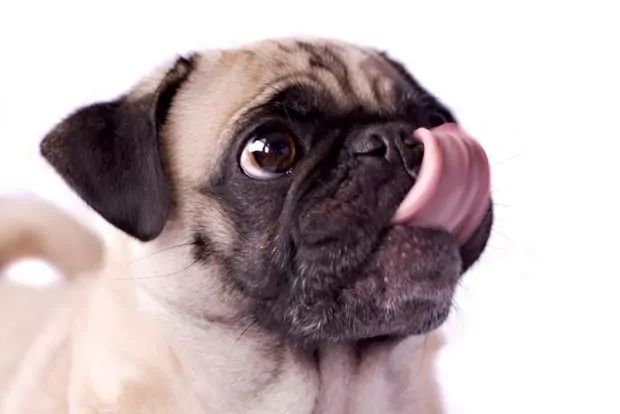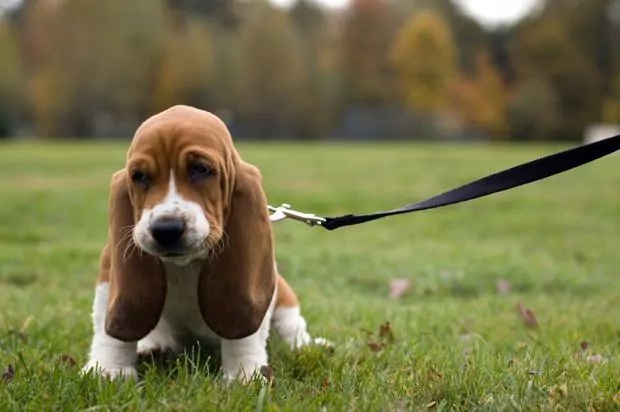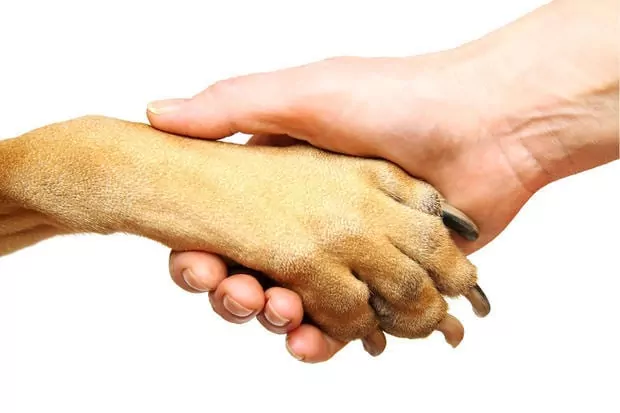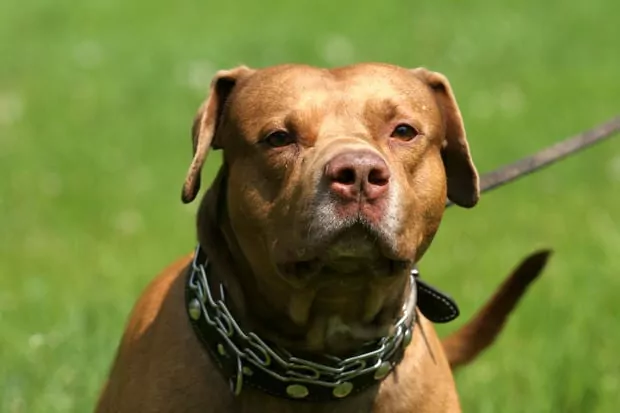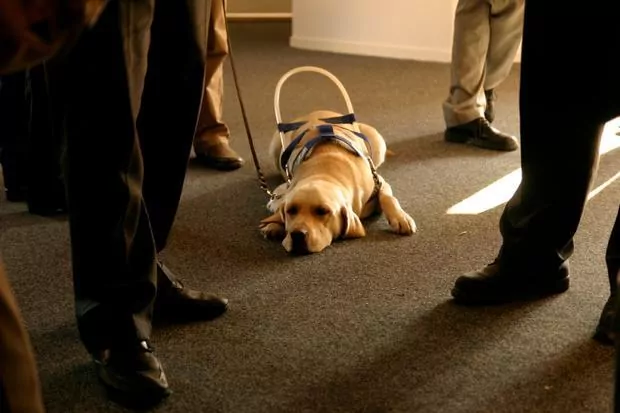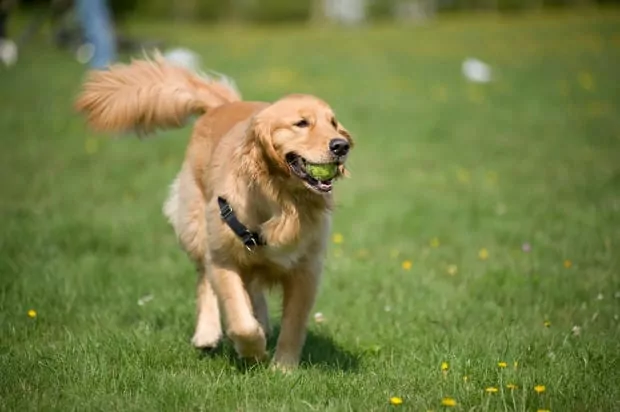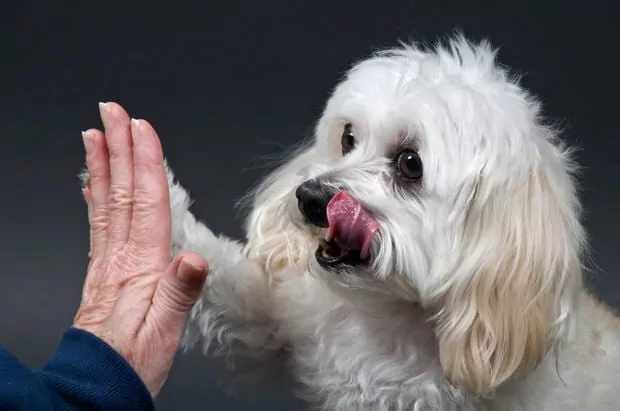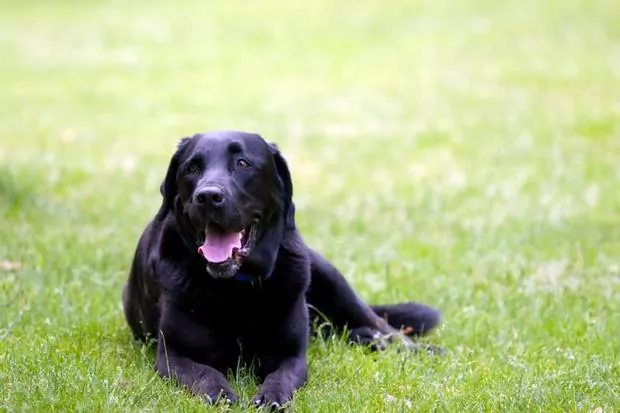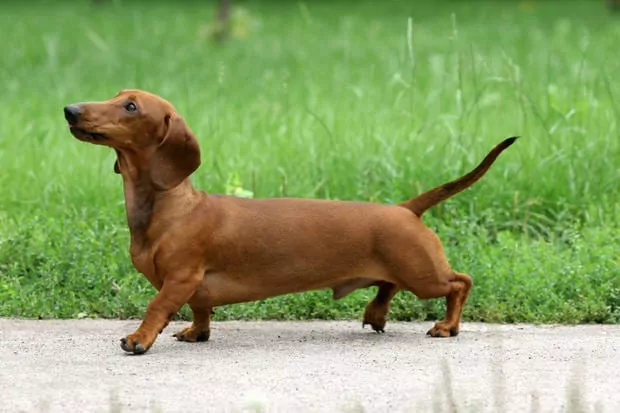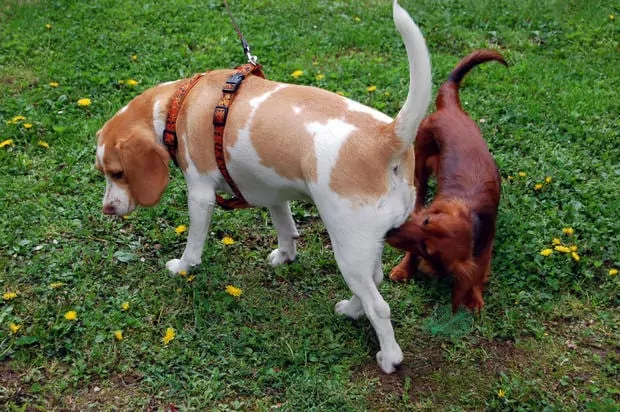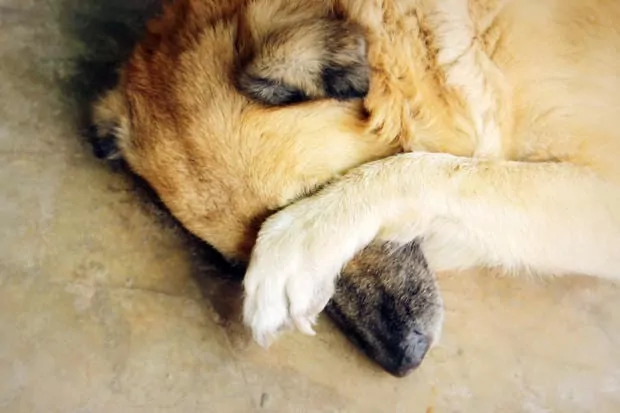1. WHY DO DOGS LICK PEOPLE?
Dogs lick people and other dogs for a whole variety of reasons. Puppies will lick their mothers or owners as a sign of affection or when asking for food. Once they’re adults, licking becomes a sign of submission to an authority figure. When your dog licks you, they probably want something, like food or attention. Doggy kisses are also a way for your pet to feel better: Licking releases endorphins that calm and relieve stress. It’s a comforting behavior you’ll see often if your pup attends a dog daycare programs where emotional bonding and routine play help reduce stress.
2. WHY IS MY DOG’S NOSE ALWAYS WET?
A common misconception is that your dog’s wet nose is a sign of good health. In reality, the moisture on Fido’s nose is no indication of their overall well-being. The reason for a dog’s wet nose is a little murkier. One explanation is that dogs repeatedly lick their nose throughout the day to keep it clean. Another is that the moisture helps them cool off. Dogs don’t sweat the way humans do, so they pant and let off extra heat through their noses. A special gland in the nose produces a clear fluid that helps them cool down faster.
3. HOW MUCH BETTER IS A DOG’S SENSE OF SMELL THAN OUR OWN?
A dog can smell anywhere from 10,000 to 100,000 times better than the average human. Canines have 300 million olfactory receptors, compared to our measly six million. Moreover, the part of the brain dedicated to smell is 40 times larger in dogs than in humans.
A dog’s nose also works differently than the human nose. While people breathe in and out the same way, canines breathe in through their nostrils and out through the slits found on the sides of the nose. This system circulates air so that the animal is always bringing in new smells. Breeds like the bloodhound also have the advantage of floppy ears that push up new smells.
4. WHY DO DOG FEET SMELL LIKE CORN CHIPS?
If you think your dog’s feet smell like popcorn or corn chips, you’re not alone! Dogs have a lot of bacteria and yeast that grow on their paws as a result of moisture that gets caught in the many folds and pockets between their toes. These microorganisms create a variety of smells. The bacteria Proteus or Pseudomonas are the likely parties guilty of giving your hound’s feet that distinct tortilla smell. There’s no need to go wash your pet’s paws just yet, though a subtle smell is completely normal.
5. IS MY DOG’S MOUTH REALLY THAT CLEAN?
A common myth is that a dog’s mouth is a magically clean place. This is not the case: A canine mouth is brimming with bacteria. Fortunately, a lot of those germs are specific to the species so you don’t have to worry when your pup goes in for a wet kiss. That said, there are some similar bacteria, so make sure your pet has up-to-date shots.
6. ARE PIT BULLS ACTUALLY DANGEROUS?
Like people, dangerous dogs are on a case-by-case basis. It’s not fair or accurate to condemn a whole breed as hostile or aggressive. Despite bans on the dogs, pit bulls are no more dangerous than any other large breed. The negative connotation is likely a result of the increase in illegal dog fighting in the 1980s. Pit bulls were not always seen as vicious, though. In the early 20th century, dogs were an American family favourite. The breed made appearances on television, in movies, and in war propaganda. Some pits even became celebrated war heroes in World War I.
Breed stereotypes aside, most dogs, when placed in the right environment, such as a well-managed dog care facility, thrive with socialization, structure, and love.
7. DO DOGS GET JEALOUS?
Anyone with two dogs will probably tell you that dogs definitely feel jealousy, and it’s true! A recent study confirmed that your pet gets a little miffed when you start petting other dogs on the side.
Subjects in the study were asked to give love and attention to objects while filming their dog’s reactions. The items were a stuffed dog, a jack-o-lantern, and a pop-up book. The participants would give attention to the plush and pumpkin, and then read from the book. Scientists recorded the reactions of the dogs and looked for jealous signs such as pushing the owner or snapping. The study found that dogs displayed many jealous tendencies and made attempts to break the owner away from the rival. They were most threatened by the stuffed dog and least threatened by the book.
8. WHO CLEANS UP AFTER GUIDE DOGS?
Guide dogs are extremely well trained and only go to the bathroom on command. Usually the owner will have a specific spot for the hound and use a command word like, “go time” or, “do your business,” so they’ll know when to clean up.
9. WHAT ARE THE MOST COMMON DOG NAMES OUT THERE?
2014’s most common dog names are Bella, Max, Buddy, Lucy, and Daisy. If you’re curious about how much dog name trends change, here are some popular ones from Medieval times: Blawnche, Nosewise, Smylfeste, Bragge, Holdfast, Zaphyro, Zalbot, Mopsus, and Mopsulus.
10. DOES A DOG’S WAGGING TAIL REALLY MEAN IT’S HAPPY?
A dog’s tail can tell you a lot about how they are feeling. A loose wag from side to side means the dog feels relaxed and content. More fervent wagging with hip movements means the dog is happy or saying hello to a loved one. If the tail is straight up, it is a sign of confidence or aggression; down and curled between the legs usually means fear or submission.
In communal environments, like during dog boarding services, tail-watching can help caregivers understand each dog’s comfort level in group settings.
11. CAN MY DOG REALLY BE LEFT PAWED?
Just like humans, dogs have a preferred paw. There is an equal chance your pup can be a lefty or righty, so the best way to find out is to perform a series of tests. Watch what paw your dog uses to shake, scratch at the door, or pull toys out from under the couch. Usually, a dominant paw will emerge with enough observation.
12. WHY DO DOGS SPIN IN CIRCLING BEFORE LAYING DOWN?
Dogs get this behaviour from their wild ancestors, who didn’t have access to doggy beds. Walking in tight circles would push down tall grass and shape it into a bed. The motion would also scare off any bugs and snakes hiding in the vegetation.
13. WHY IS A FRANKFURTER CALLED A HOT DOG?
The deli product was originally known as a dachshund sausage because it resembled the short-legged hound. How the name switched is up for debate, but some believe the name was shortened to “hot dog” when a befuddled cartoonist could not spell the original name.
14. WHY DO DOGS SNIFF EACH OTHER’S BUTTS?
Dogs sniff rear ends as their way of asking, “Who are you and how have you been?” Canines can find out a whole slew of information from just a whiff. The secretions released by glands in the rump tell other animals things like the dog’s gender, diet, and mood. It’s sort of like talking with chemicals.
It’s one reason why professional dog boarding facilities often screen new guests before introducing them into playgroups, to maintain harmony through positive socialization.
15. CAN MY DOG ACTUALLY FEEL GUILTY FOR SOMETHING?
Possibly, but dogs are great actors. A study asked dog owners to place a treat in front of their dogs, tell them not to eat it, and then walk away. In some trials, the dogs were scolded regardless of whether they had eaten the treat or not; in other trials, they were not scolded at all. The results showed that the dogs always looked guilty when scolded, but dogs that weren’t reprimanded for bad behaviour made no face at all. The expression seemed to be a way to appease their owners. So when your pet flashes you those big puppy eyes, they may just be faking it to get out of trouble.
From the wagging of their tails when they’re happy to sniff each other’s butts in greeting, dogs are capable of a range of behaviours that have been passed on from generations past. While some may think it strange or funny, these actions can provide us with valuable insight into our canine companions and help us better understand them. We now know why they spin around before lying down and why hotdogs were given their name; we also know that while guilt is one emotion your pup might display, it likely doesn’t mean what you think! With knowledge comes understanding: if you want to be an even better pet parent for your furry friend, continue learning more about dog behaviour so you can become attuned to how best to care for them.
And when it comes to ensuring comfort while you’re away, understanding your dog’s personality will help you choose between short- or long-term dog boarding options tailored to their temperament.
Today’s Fun Facts are Courtesy of MentalFloss.com
